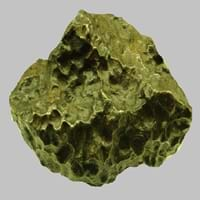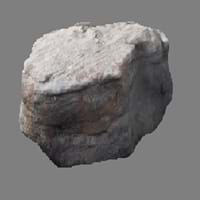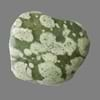Definition
Epidosite is a highly altered epidote and quartz bearing rock which is a type of metasomatite, essentially altered basalt
Gritstone or grit is a hard, coarse-grained, siliceous sandstone
Origin
Unknown
Pennines, England
Discoverer
Unknown
J.J. Ferber
Etymology
Not Available
From Grit + Stone
Class
Igneous Rocks
Sedimentary Rocks
Sub-Class
Durable Rock, Medium Hardness Rock
Durable Rock, Hard Rock
Group
Volcanic
Not Applicable
Other Categories
Coarse Grained Rock, Fine Grained Rock, Opaque Rock
Coarse Grained Rock, Opaque Rock
Texture
Glassy, Massive, Porphyritic, Scoriaceous, Vesicular
Earthy
Color
Black, Brown, Light to Dark Grey
Beige, Black, Brown, Colourless, Cream, Dark Brown, Green, Grey, Light Green, Light to Dark Grey, Pink, Red, White, Yellow
Durability
Durable
Durable
Scratch Resistant
Yes
Yes
Appearance
Dull and Soft
Layered and Foliated
Interior Uses
Decorative Aggregates, Floor Tiles, Homes, Hotels, Interior Decoration
Countertops, Decorative Aggregates, Homes, Interior Decoration
Exterior Uses
As Facing Stone, Garden Decoration, Office Buildings, Paving Stone
As Building Stone, Garden Decoration, Office Buildings, Paving Stone
Other Architectural Uses
Curbing
Curbing
Construction Industry
As Dimension Stone, Cobblestones, Rail Track Ballast, Roadstone
Construction Aggregate, Roadstone
Medical Industry
Not Yet Used
Not Yet Used
Antiquity Uses
Artifacts, Monuments, Sculpture, Small Figurines
Artifacts, Monuments, Sculpture
Commercial Uses
Commemorative Tablets, Creating Artwork
An Oil and Gas Reservoir, As a Feed Additive for Livestock, Gemstone, Metallurgical Flux, Production of Lime, Soil Conditioner, Source of Magnesia (MgO), Tombstones
Types
Alkaline Basalt, Boninite, High Alumina Basalt, Mid Ocean Ridge Basalt (MORB), Tholeiitic Basalt, Basaltic trachyandesite, Mugearite and Shoshonite
Not Available
Features
Has High structural resistance against erosion and climate, Very fine grained rock
Available in Lots of Colors and Patterns, Generally rough to touch, Very fine grained rock
Archaeological Significance
Famous Monuments
Data Not Available
Data Not Available
Famous Sculptures
Data Not Available
Data Not Available
Pictographs
Used
Not Used
Petroglyphs
Used
Not Used
Formation
Epidosite is a fine-grained, hard rock which is a type of metasomatite, essentially altered basalt. It forms with or without crystallization, either below the surface as intrusive rocks or on the surface as extrusive rocks.
Gritstone is a type of sedimentary rock which was formed on the floors of wide river deltas where the grit deposits were laid down, with every tide or flood dumping another layer of sediment.
Mineral Content
Olivine, Plagioclase, Pyroxene
Calcite, Clay Minerals, Feldspar, Micas, Quartz
Compound Content
Aluminium Oxide, CaO, Iron(III) Oxide, FeO, Potassium Oxide, MgO, MnO, Sodium Oxide, Phosphorus Pentoxide, Silicon Dioxide, Titanium Dioxide
Aluminium Oxide, CaO, Iron(III) Oxide, Potassium Oxide, MgO, Sodium Oxide, Silicon Dioxide
Types of Metamorphism
Burial Metamorphism, Cataclastic Metamorphism, Hydrothermal Metamorphism, Impact Metamorphism
Not Applicable
Types of Weathering
Biological Weathering, Chemical Weathering, Mechanical Weathering
Biological Weathering, Chemical Weathering, Mechanical Weathering
Types of Erosion
Not Applicable
Chemical Erosion, Coastal Erosion
Grain Size
Fine to Coarse Grained
Coarse Grained
Fracture
Conchoidal
Conchoidal
Streak
White to Grey
White
Porosity
Less Porous
Highly Porous
Luster
Not Available
Dull
Compressive Strength
Not Available
Cleavage
Not Available
Perfect
Toughness
2.3
Not Available
Specific Gravity
2.8-3
2.250
Transparency
Opaque
Opaque
Density
Not Available
2.2 g/cm3
Specific Heat Capacity
Not Available
Resistance
Heat Resistant, Pressure Resistant, Wear Resistant
Heat Resistant, Impact Resistant, Pressure Resistant
Deposits in Eastern Continents
Asia
India, Russia
China, India, Kazakhstan, Mongolia, Russia, Uzbekistan
Africa
South Africa
Namibia, Nigeria, South Africa
Europe
Iceland
Austria, Denmark, Germany, Great Britain, Netherlands, Poland, Sweden, Switzerland, United Kingdom
Others
Not Yet Found
Greenland
Deposits in Western Continents
North America
Canada, USA
Canada, USA
South America
Brazil
Brazil
Deposits in Oceania Continent
Australia
Not Yet Found
New South Wales, New Zealand, Western Australia
Epidosite vs Gritstone Characteristics
Though some rocks look identical, they have certain characteristics which distinguish them from others. Characteristics of rocks include texture, appearance, color, fracture, streak, hardness etc. Epidosite vs Gritstone characteristics assist us to distinguish and recognize rocks. Also you can check about Properties of Epidosite and Properties of Gritstone. Learn more about Epidosite vs Gritstone in the next section. The interior uses of Epidosite include Decorative aggregates, Floor tiles, Homes, Hotels and Interior decoration whereas the interior uses of Gritstone include Countertops, Decorative aggregates, Homes and Interior decoration. Due to some exceptional properties of Epidosite and Gritstone, they have various applications in construction industry. The uses of Epidosite in construction industry include As dimension stone, Cobblestones, Rail track ballast, Roadstone and that of Gritstone include Construction aggregate, Roadstone.
More about Epidosite and Gritstone
Here you can know more about Epidosite and Gritstone. The life cycle of a rock consists of formation of rock, composition of rock and transformation of rock. The composition of Epidosite and Gritstone consists of mineral content and compound content. The mineral content of Epidosite includes Olivine, Plagioclase, Pyroxene and mineral content of Gritstone includes Calcite, Clay Minerals, Feldspar, Micas, Quartz. You can also check out the list of all Igneous Rocks. When we have to compare Epidosite vs Gritstone, the texture, color and appearance plays an important role in determining the type of rock. Epidosite is available in black, brown, light to dark grey colors whereas, Gritstone is available in beige, black, brown, colourless, cream, dark brown, green, grey, light green, light to dark grey, pink, red, white, yellow colors. Appearance of Epidosite is Dull and Soft and that of Gritstone is Layered and Foliated. Properties of rock is another aspect for Epidosite vs Gritstone. The hardness of Epidosite is 6 and that of Gritstone is 6-7. The types of Epidosite are Alkaline Basalt, Boninite, High Alumina Basalt, Mid Ocean Ridge Basalt (MORB), Tholeiitic Basalt, Basaltic trachyandesite, Mugearite and Shoshonite whereas types of Gritstone are Not Available. Streak of rock is the color of powder produced when it is dragged across an unweathered surface. The streak of Epidosite is white to grey while that of Gritstone is white. The specific heat capacity of Epidosite is Not Available and that of Gritstone is 0.92 kJ/Kg K. Depending on the properties like hardness, toughness, specific heat capacity, porosity etc., rocks are resistant to heat, wear, impact, etc.Epidosite is heat resistant, pressure resistant, wear resistant whereas Gritstone is heat resistant, impact resistant, pressure resistant.





